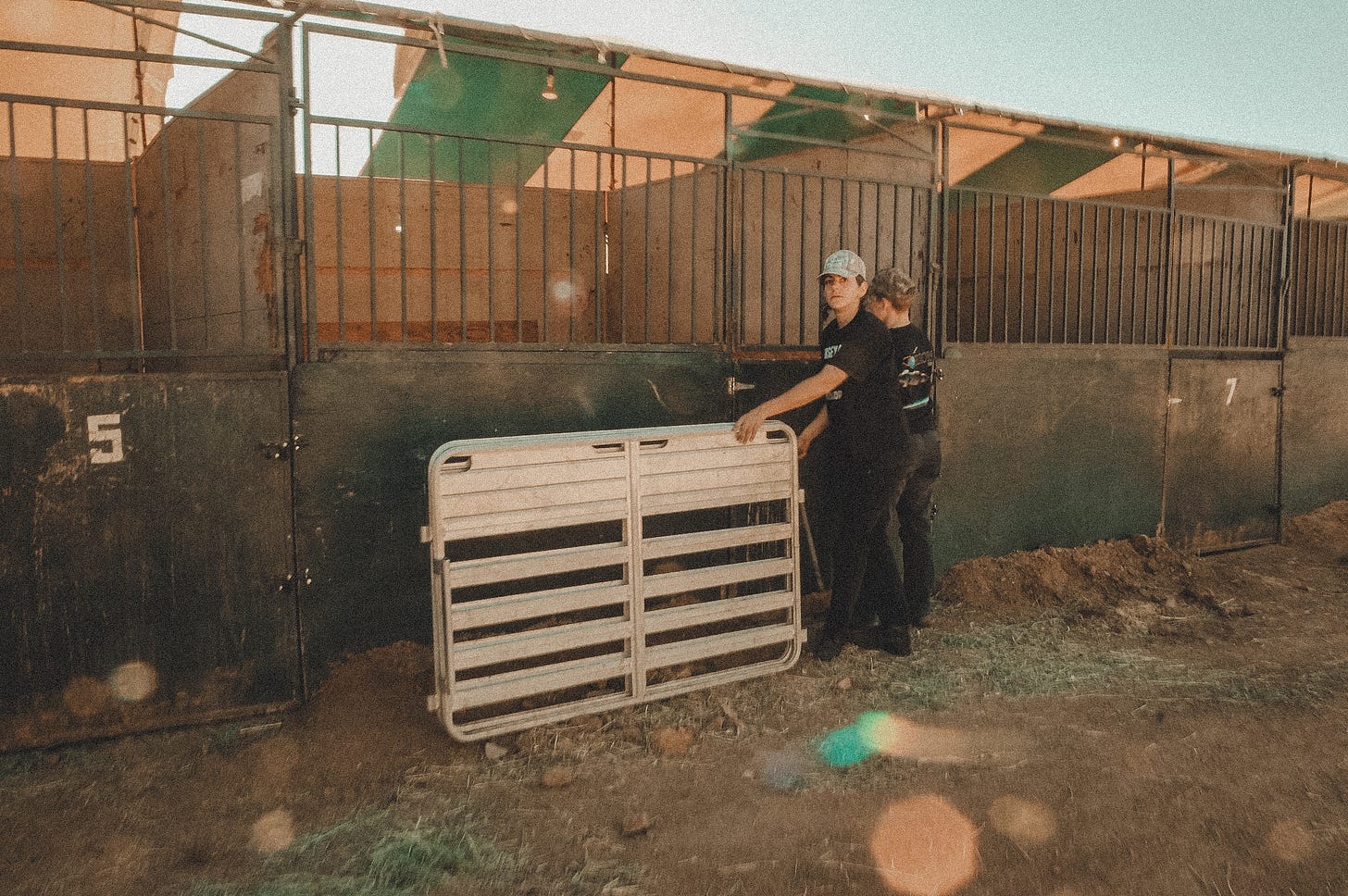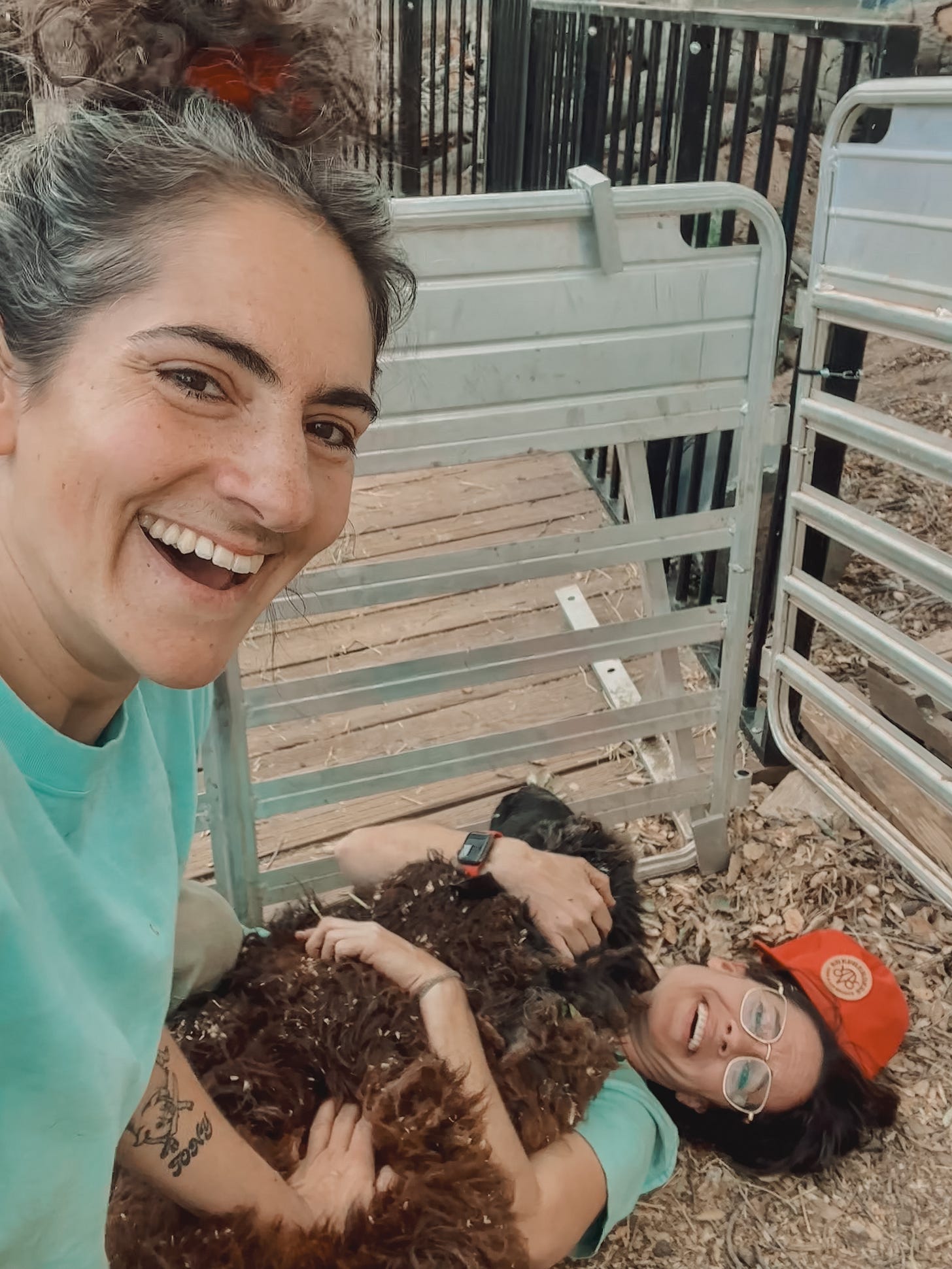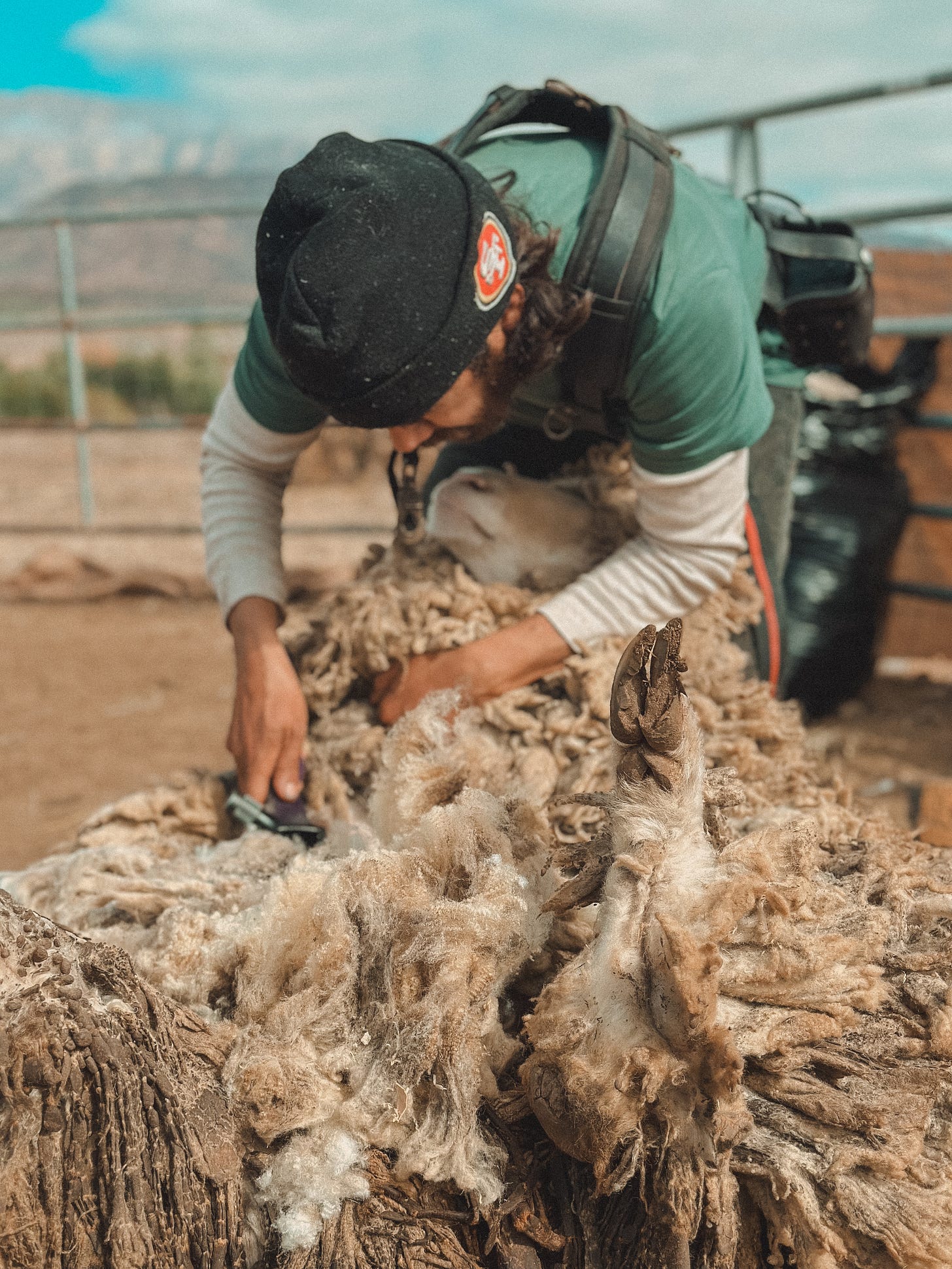Cole and I recently drove to Agoura Hills to catch two feral rams on a backyard hillside. The rest of the herd had been evacuated in the middle of the night by the Ojai Herd and Horse Network as the LA fires began to bloom north of the 101 back in January, but these two evaded capture during the initial rescue operation. I understand that gathering two sheep seems like it should be a simple task - lure them with hay across the hills and down through a lane fortified with planks of wood and electric fencing, maintain proper body positioning in respect of their flight zones (1), patiently convince them that the trailer is the place to be, etc. But these sheep were unaccustomed to human interaction and had horrifyingly overgrown wool, tugging at their skin and creating barriers to their sight, intensifying the challenge of this task. These massive rams were among the most skittish animals I’ve ever encountered, exhibiting zero trust in the two of us, a ragtag team of human interlopers. We spent an hour trying to charm them with outstretched armfuls of crunchy alfalfa, enticing them closer and closer to the trailer. But one stray sound - the sudden flapping of a bird’s wings, the rustle of leaves under a squirrel’s foot, the squeal of truck brakes on the road - and they would flee back up the hill, sufficiently afraid and less willing to participate in our scheme than ever.
We were running out of time as the afternoon sun crept in. I had to be at my other job in Ojai later that afternoon, so we were on a time crunch to get these animals into the trailer. This extended rescue mission perfectly exhibits the concept of sheep time - how shepherds and their herds operate according to alternative clocks set by the rhythms of the herd rather than to an arbitrary capitalist clock that revolves around the 9-5 workday. These plucky rams, while maddening in their refusal to cooperate, offered us the unique opportunity to hone our patience and to momentarily step outside the bounds of a racing capitalist time framework.
After four grueling hours of chasing, tackling, wrestling, cornering and ambushing across creek beds, canyons and bridges, we finally wrangled both sheep into the trailer, and not without a litany of battle wounds, reminders of this comical event embedded into our nearly 40-year-old skin and muscles. At one point, all of our human limbs were entangled around the torso and legs of the second sheep, whose horned head thrashed, knocking Cole’s glasses to the ground and painting a bruise into her right eye socket. As the ram realized he had finally been caught, the three of us laid there together, immobile, as we regathered strength and formulated a plan amidst our relentless laughing to safely move him into the trailer, where he and his companion would munch on masses of alfalfa until arriving in Ojai.
Cole and I recently spoke to a group of new agrarians through SoilCentric. One of the attendees asked, “How do you make it through the lowest lows, the hardest times of shepherding?” We both recalled the antics of this rescue mission and how laughing through the chaos was the balm we needed. Sometimes we end up in impossible and absurd situations that cannot be rationalized and that can only be met with a sense of humor. When we are covered in bruises and scratches and sheep shit and mud and probably amniotic fluid and maybe we’re limping because of an interaction with a horn and our quads are on fire from sprinting up cliff sides and our heads hurt because we banged them on low-hanging branches and our mouths are dry and covered in dust because we haven’t had water in hours, all we can do is laugh. And more importantly, prepare better next time.
The rams are now shorn thanks to Little Tujunga Shearing and they are living less encumbered lives at the main ranch in Ojai. They were carrying upwards of 20 pounds of matted, shitty wool each, having not been shorn in years. While we were technically rescuing these animals from the path of wildfire, it felt like more of a mission to rescue them from their owners. Many people believe that allowing animals to roam free from human intervention is best for the animal, and that we should interfere in their lives as little as possible, stopping by their pens just twice a day to refresh water and provide hay. There is a common belief that the more hands-off we are with livestock, the more caring we are, and that livestock, which have been domesticated by humans for thousands of years, should be treated like wildlife - deer or bears - for whom human contact can be deadly.
I am not interested in shaming anyone who understands this to be our relationship with livestock, but I do hope to offer another perspective. I see us as mutual caretakers. We take care of their physical needs, strengthening our 10,000-year bond, and they take care of our emotional needs and our spirits. Like I wrote about last week, we owe these animals health, wellbeing and safety. And when domesticated animals are not accustomed to humans, their safety can be compromised. Sheep can panic when they are scared, getting into trouble by ramming through fences, jumping over railings leading to injury, or ramming or kicking us, all of which happened during our rescue adventure. But this can often be avoided with regular contact and by acclimating them to our presence using their body language as a framework. It may be a lot of work to foster trust with other animals, but don’t all healthy relationships require patience and dedication (and a bale or two of fresh alfalfa)?
Flight zones refer to the space around an animal - their boundary. When humans or potential threats enter this space, the animal moves away. Flight zones for more tame animals who are accustomed to humans are very small - if you can pet a sheep, it has no flight zone with you. The more skittish an animal, the larger the flight zone.








